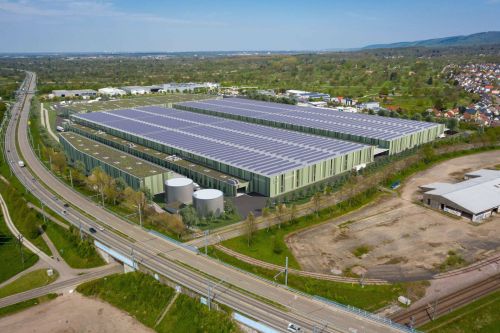The bull that keeps on running
Stock market reportIt is the health of the largest economies of the world that has been driving optimism among investors. The Trump administration has been generating controversy, but not when it comes to economic issues – the US economy is doing very well, as is reflected by the increases on the American stock exchanges (historic peaks for the S&P500 index and good Q4 2016 figures), on the real estate market and in consumer spending. This has been accompanied by growing inflation, making an increase in interest rates across the pond more and more likely. However, the picture has been positive so far, as has also been the case for the euro zone. The top economic performer among the euroland countries, Germany, has been joined by two other large economies, the French and the Italian. The economic forecasts for euroland are and probably will improve over the year (growth of almost 2 pt is predicted for the year. Economists also point out that there is no worrying news coming out of China. The strong economic foundations are also facilitating growths on emerging markets. Globally there have been increased inflows onto stock exchanges and to funds investing on global trading floors. So far politics has moved into the background, even though it should be remembered that apart from Brexit (two years of negotiations between the European Union and the UK are just about to start), the risks that lie ahead include elections – a presidential vote in France this spring and parliamentary elections in Germany in the autumn. The future of the EU in terms of the greater integration of the euro zone should be determined before this – with there being much to indicate that the hackneyed slogan ‘a two-speeds Europe’ is set to become reality to a certain extent. The lack of a common currency and the government’s ambivalent approach towards the EU suggests that Poland will remain in the group of the countries ‘chasing up’ the richest ones, but its economy has recently been doing better and better. Last autumn was clearly a rough patch, but this year could even see a revival in investment, which will certainly help the construction industry. In addition to this, the good situation on the job market and increasing incomes are also set to drive the second engine of the economy, consumption.
The index growths between mid-February and mid-March were not so impressive, but it should be noted that the stock exchange registered increases after every week. The WIG20 was up by almost 4 pct, slowly climbing towards its 2015 peak when it reached the level of 2,500 points in the May of that year. The WIG also increased by almost 4 pct, but managed to surpass its maximum levels of 2015 and 2013. Turning to the sector indexes, WIG-Real Estate is still afflicted by a profound sluggishness and seems not to have been boosted by all the growth elsewhere (an increase of 1 pct). In contrast, the prices of construction companies shot up, including WIG-Construction, which has registered a growth of 26 pct since the beginning of the year and is only bettered by WIG-Raw Materials. In the ranking of companies those that stand out include ‘convalescents’, such as PBG and Polimex Mostostal, who have enjoyed triple-digit increases since the beginning of the year and lead the bull market in terms of construction companies. Daily increases of these shares amounted to 20–30 pct. However, these are not the only companies that have gained considerably. Mirbud increased its value by almost 50 pct, as a result of winning a number of contracts. The majority of companies exhibited double-digit growth and only three suffered decreases: Mostostal Zabrze, Prochem and PA Nova. Some construction firms have already published their 2016 results. The biggest of these – Budimex – has been able to boast some excellent figures, including increases in revenue (8.5 pct) and net profit (up 74 pct to PLN 410 mln). This was much higher than the profit generated in 2012 (PLN 300 mln), the year of the Euro 2012 football championships, but 2016 was definitely a disappointing year for the construction sector. The company now has a portfolio of orders worth almost PLN 9 bln. Among the developers, more companies saw their values slip, but the largest firms, such as Dom Development and J.W. Construction, enjoyed very decent bounces. The former company was able to boast record apartment sales figures and an increase in revenue of 28 pct to PLN 1.15 bln, while its profit was up by 56 pct to PLN 125.7 mln. J.W. Construction announced a fivefold increase in profit with revenue of almost half a billion złoty. Subscriptions for the company’s shares in a call announced by its major shareholder were completed in mid-March, by when the price had increased from PLN 4.7 to PLN 5.2 per share.
Wobble on the danube
The WIG20 outpaced the BUX again, as both February and March turned out to be a period of wild variability for the Hungarian index. The balance was negative due to the main index of the Budapest stock exchange losing 2.5 pct. This came despite some highly promising forecasts for the Hungarian economy (GDP growth of 3 pct in 2017 compared to 2 pct in 2016). The PX50 of the Prague stock exchange, however, experienced a slight increase – of 1.5 pct, similar to those of other indexes in emerging markets.





















































